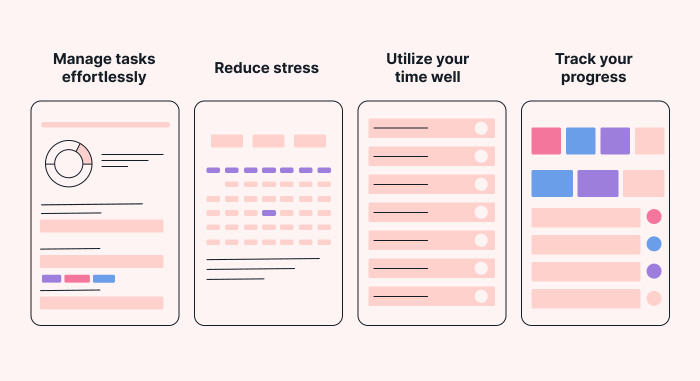Daily Planner App: In an increasingly digitized world, the humble planner has undergone a dramatic transformation. No longer confined to paper and pen, the daily planner app has emerged as a potent tool for organization and productivity, vying for a place on the ever-expanding landscape of mobile applications.
This exploration delves into the multifaceted nature of this digital organizational aid, examining its market position, user needs, design considerations, and monetization strategies. We will dissect the intricacies of app development, from the initial conceptualization and design to the crucial aspects of marketing and launch.
The competitive landscape of daily planner apps is fiercely contested, with established players and emerging startups vying for user attention. This analysis will dissect the strategies employed by leading competitors, identifying their strengths and weaknesses to illuminate potential opportunities for innovation.
Furthermore, the study will explore the critical role of user experience (UX) design in shaping user engagement and satisfaction, underscoring the importance of intuitive interfaces and seamless functionality. Finally, the discussion will extend to the practicalities of app development, including technical considerations, data security, and the creation of a robust marketing and launch plan.
User Needs and Preferences: Daily Planner App
Daily planner apps have exploded in popularity, reflecting a growing need for efficient time management and organization in our increasingly busy lives. Understanding the typical user and their key requirements is crucial for developers to create successful and engaging applications.The typical user profile encompasses a broad spectrum, from students juggling coursework and extracurricular activities to professionals managing complex projects and deadlines.
However, common threads unite these diverse users: a desire for enhanced productivity, improved organization, and reduced stress related to scheduling.
Primary User Needs Addressed by Daily Planner Apps
Addressing the core needs of users is paramount for app success. Three primary needs consistently emerge: streamlined task management, effective scheduling, and personalized customization. A successful app must excel in all three areas to achieve widespread adoption.
User Interface Design and User Experience, Daily planner app
The user interface (UI) is not merely a visual element; it is the primary means by which users interact with the app and achieve their goals. A well-designed UI directly impacts user experience (UX) and overall engagement. Poor design can lead to frustration, abandonment, and negative reviews, while a user-friendly interface fosters satisfaction and continued use.
- Intuitive Navigation:A clear and logical layout, allowing users to easily access desired features and information. For example, a simple, color-coded calendar view with drag-and-drop functionality for scheduling appointments would be highly intuitive.
- Visual Appeal and Aesthetics:An aesthetically pleasing design enhances the user experience and makes the app more enjoyable to use. Think of apps that incorporate calming color palettes and minimalist designs, reducing visual clutter and promoting a sense of calm.
- Personalization Options:Allowing users to customize the app to their individual preferences, such as choosing themes, notification settings, and view options, significantly improves engagement. This could include options for different calendar views (day, week, month), customizable widgets, and the ability to integrate with other apps.
Summary
Ultimately, the success of a daily planner app hinges on its ability to seamlessly integrate into the user’s life, providing a valuable and intuitive tool for managing their time and tasks effectively. This analysis has illuminated the crucial elements that contribute to a successful app, from a thorough understanding of user needs and preferences to the meticulous design of the user interface and the implementation of a sound monetization strategy.
By addressing the challenges of app development and marketing strategically, developers can create a daily planner app that not only meets user expectations but also establishes a significant presence in a competitive market. The journey from concept to launch requires a multifaceted approach, encompassing technical expertise, design acumen, and a keen understanding of market dynamics.

